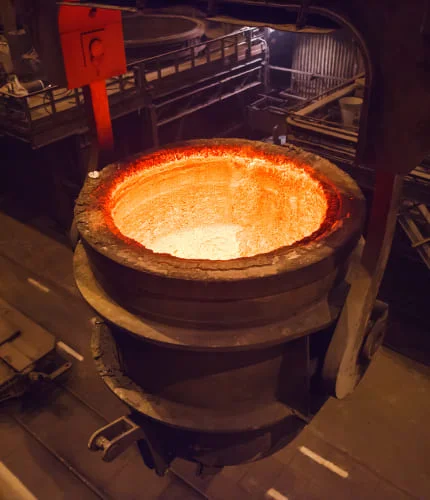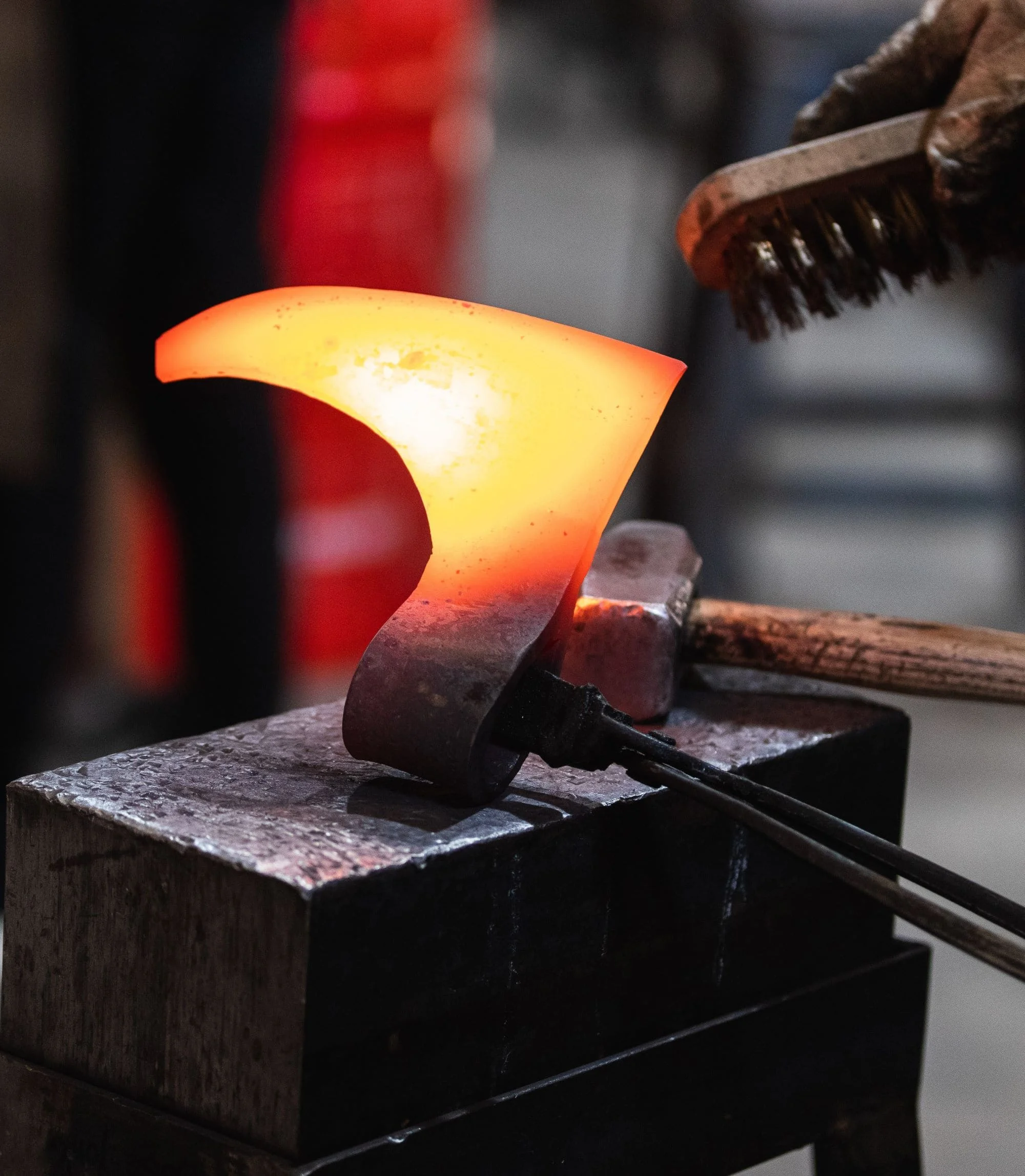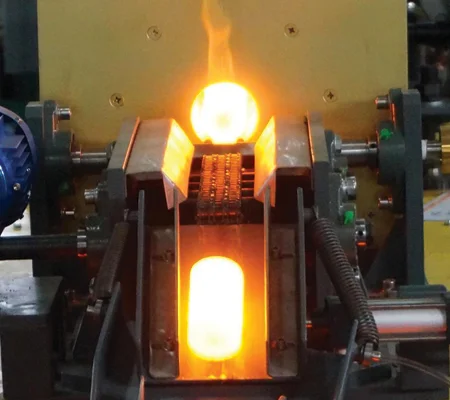01
The metal workpiece, which can be in the form of billets, bars, or other shapes, is prepared and cleaned to remove any contaminants or surface oxides that might interfere with the induction heating process.
02
The metal is positioned within an induction coil, which is a component of the induction furnace.
03
An alternating current flows through the induction coil, creating a fluctuating electromagnetic field around the metal. This field induces eddy currents within the metal.
04
The resistance of the metal to these eddy currents generates localized heat. The metal heats up rapidly and evenly due to the precise control of the electromagnetic field.
05
Throughout the heating process, the temperature of the metal is closely monitored using various sensors. This ensures that the metal reaches the optimal forging temperature, which is usually a few hundred to a thousand degrees Celsius depending on the material.
06
Once the metal reaches the desired temperature, it is transferred to a forging station where it will be shaped.
07
The hot metal is subjected to mechanical force, typically from a hydraulic press, forging hammer, or other pressing equipment. This force deforms the metal into the desired shape, such as a gear, shaft, or other component.
08
Often, the forging process involves the use of dies that define the final shape of the component. The metal is pressed into these dies to achieve the precise dimensions and features required.







